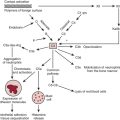Knee osteoarthritis (OA) is a common condition that affects many people as they get older. It happens when the cartilage in the knee joint breaks down, causing pain, stiffness, and swelling. This can make it harder to move around, and simple tasks like walking or climbing stairs can become difficult. While there are many treatments for knee OA, physical therapy (PT) is one of the most effective ways to manage the condition without surgery. This guide will explain how physical therapy can help relieve knee OA symptoms and improve your quality of life.
What is Knee Osteoarthritis?
Knee osteoarthritis is a type of arthritis that happens when the protective cartilage in the knee wears down over time. Cartilage is the smooth tissue that allows your knee joint to move easily. When this cartilage breaks down, the bones in the knee can rub together, causing pain and swelling. OA usually develops gradually and can get worse over time.
Common symptoms include:
- Pain: Often felt in the knee when walking, standing, or using stairs.
- Stiffness: It may be hard to bend or straighten the knee.
- Swelling: The knee may feel puffy or swollen.
- Reduced Mobility: Movement can become limited, making everyday tasks harder.
Several factors can contribute to knee OA, such as aging, past injuries, obesity, and genetics.
How Does Physical Therapy Help?
Physical therapy is one of the best treatments for knee osteoarthritis. A physical therapist (PT) will work with you to improve your knee’s strength, flexibility, and range of motion. PT helps reduce pain and stiffness while also preventing the condition from getting worse.
Here’s how physical therapy can help:
- Pain Relief: A PT uses techniques like heat, cold, and massage to help reduce knee pain.
- Strengthening: Strong muscles around the knee can take pressure off the joint, reducing pain.
- Improved Flexibility: Stretching exercises help increase the range of motion in the knee, making it easier to move.
- Better Balance and Stability: Strengthening the muscles around the knee improves your balance, reducing the risk of falls.
By focusing on these areas, PT helps make everyday activities easier and more comfortable.
Physical Therapy Treatments for Knee Osteoarthritis
There are several physical therapy treatments that are proven to help manage knee osteoarthritis. These treatments are focused on improving your knee’s strength, flexibility, and function. Here are some of the most common ones:
Stretching Exercises
Stretching exercises help improve flexibility and reduce stiffness in the knee. They can make it easier to bend and straighten your knee. Some common stretches include:
- Hamstring Stretch: Helps loosen the muscles in the back of the thigh.
- Calf Stretch: Targets the muscles in the lower leg to improve knee movement.
Strengthening Exercises
Strong muscles around the knee can support the joint, reduce pain, and improve function. The most important muscles to strengthen are the quadriceps (front of the thigh), hamstrings (back of the thigh), and calf muscles. Some common strengthening exercises include:
- Quad Sets: Tighten the muscles at the front of the thigh to strengthen the quadriceps.
- Leg Lifts: Strengthens the quadriceps by lifting the leg while lying down.
- Step-Ups: Step onto a small platform to strengthen the thigh and calf muscles.
Balance and Stability Exercises
Balance exercises help improve your ability to move and prevent falls. As OA can affect your balance, these exercises are important for maintaining stability. Some examples include:
- Single-Leg Stands: Stand on one leg to improve balance and strength.
- Balance Board: Use a balance board to work on stability and strengthen the muscles around the knee.
Low-Impact Aerobic Exercises
Low-impact exercises, such as swimming, cycling, and using an elliptical machine, can improve overall fitness without putting too much stress on the knee. These exercises help strengthen muscles while also increasing your endurance and stamina.
Manual Therapy
Manual therapy involves hands-on techniques, like massage and joint mobilizations, that help reduce pain and stiffness. A PT may gently manipulate the knee joint to improve its range of motion and decrease swelling.
Thermotherapy and Cryotherapy
Using heat and cold is an important part of PT for knee OA. Heat helps relax tight muscles, while cold can reduce swelling and numb pain. Your PT may recommend applying heat or cold before or after exercises to help manage symptoms.
Aquatic Therapy
Aquatic therapy is a great option for people with knee osteoarthritis because the buoyancy of the water reduces the stress on the knee joint while still allowing for strengthening exercises. It’s a gentle way to work on flexibility and strength without putting pressure on the knee.
What to Expect in a Physical Therapy Session
When you start physical therapy for knee osteoarthritis, the PT will first assess your condition. They will ask questions about your symptoms and how the knee pain affects your daily life. They may also examine the knee’s range of motion and strength.
After the assessment, the PT will create a treatment plan that’s tailored to your needs. This plan may include specific exercises and techniques designed to address your pain, stiffness, and strength. Depending on the severity of your knee OA, your PT may also recommend treatments like heat or cold therapy, joint mobilization, or aquatic therapy.
During the sessions, your PT will guide you through exercises, show you proper techniques, and monitor your progress. It’s important to do the exercises at home as well to get the best results. You will likely need multiple PT sessions, but you will start to feel improvements as you go.
The Benefits of Physical Therapy for Knee Osteoarthritis
There are many benefits to physical therapy for knee osteoarthritis:
- Pain Relief: Regular PT helps reduce knee pain and stiffness.
- Improved Strength and Function: Strengthening the muscles around the knee improves stability and reduces the load on the joint.
- Improved Quality of Life: With reduced pain and better mobility, you can enjoy activities you may have avoided before.
- Surgery Prevention: Many people with knee OA can manage their condition with PT and avoid knee replacement surgery.
When to Seek Physical Therapy
It’s a good idea to start physical therapy as soon as you begin to notice symptoms of knee OA. The earlier you start treatment, the better the results. If you experience pain, swelling, or stiffness in the knee that doesn’t improve with rest, it’s time to see a physical therapist. If your knee OA symptoms are affecting your daily life, PT can help restore your mobility and prevent further damage to the knee.
Conclusion
Physical therapy is a safe and effective way to manage knee osteoarthritis. It helps reduce pain, improve strength and flexibility, and restore mobility. With the right physical therapy program, many people with knee OA can continue to live an active and healthy life. If you’re struggling with knee pain or stiffness, talk to your doctor or physical therapist to find out how PT can help you.






